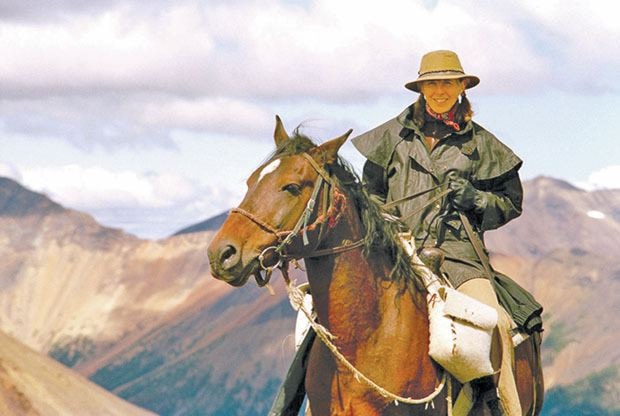She wanted to bring a curious lens, rather than a judgemental one.
Filmmaker Nettie Wild was exploring the wilderness of northwestern B.C. in 2012, travelling by horseback and sating her wanderlust, when she was struck by the ways the landscape was transforming before her eyes.
“I was becoming aware of the fact that huge change was coming to the land and the people up there, and I started to think, ‘If I’m going to do something, I better do it now.’”
And so the filmmaker, who inherited a tungsten mine near Revelstoke from her grandfather, set out to make KONELINE: our land beautiful, showing at the Civic Theatre in Nelson tonight at 7:00.
She wanted to capture the beauty she was experiencing from her own unique perspective as a film-maker and a mine-owner. And as her expectations were subverted over and over again, she came to realize that she was in a unique position to deliver “art, rather than a polemic.”
“If people catch even a whiff of judgement, they close down,” she said.
Rapid industrial development in northwestern BC, especially mining and logging, have in recent years pitted the Tahltan First Nation against the provincial government. But it has also created challenges within the Tahltan community, which simultaneously wants to preserve the wilderness and enjoy the economic opportunities mining provides.
“We wanted to present complexity instead of over-simplified answers,” Wild said. “If you bring curiosity to a conversation with someone you perceive as being on the other side of the fence from you, but genuinely want to figure out how they work and spend time with them, I think that’s a radical act.”
“I had one (First Nations) diamond driller I met, and he talked a lot about the fact he loves being in the bush, he loves his job and being able to support his family, but he doesn’t like that his elders are protesting against him,” she said.
“That was a jaw-dropper for me.”
But the main character of the movie is the landscape.
“We did most of the principal photography throughout 2014, and we went multiple times throughout the year. We had to get the land going through winter and summer, and we wanted to get a sense of the people who stay behind when everyone else goes south. It was a matter of finding various people and capturing the poetry in how they live.”
And “finding the poetry” in unusual places is pretty much her entire goal, as evidenced by one scene shot in extreme slow-motion that shows a controversial transmission line. Shot in Cinescope, it’s meant to have a Lawrence of Arabia-style grandiosity. Wild was buoyed by the response of one audience member her approached her after the film.
“I think that was maybe my favourite review. She said ‘I hate that transmission line, but I sure do love that scene in the movie’.”
And even the workers themselves were amazed. She was showing them a new way to look at their own machinery.
“We invited them over and had a tailgate screening, and they were absolutely blown away. They said, ‘We’ve never seen anything like that.’”
Wild hopes that you will reach the end of the film with more questions, not less. She believes environmentalists and people working in extractive industries need to find ways to connect despite their differences.
“This movie is meant to be seen on the big screen. What I’m asking is for Nelson residents to go down to the Civic and go for a visceral and compelling ride to a place they didn’t expect to go.”
Wild will be appearing via Skype after screening and answer questions. The film will begin at 7 p.m. tonight.
